Genre: Action Developer: Smilebit Publisher: Sega Ent. Players: 1 Released: 2000
The Dreamcast was an incredible experience for me. The diversity of game styles the console hosted during its brief but brilliant run still amazes me. There was a level of originality and creativity that Sega unleashed upon us that represented the full arsenal of a company desperately trying to captivate consumers with its best and brightest. Unfortunately, it wasn’t enough to overcome the tidal wave of marketing the PlayStation 2 had behind it, and the Dreamcast’s life was cut short. It would take years for people to appreciate the brilliance of its library.
Many of those diving into Sega’s final console today are finally understanding why so many of us loved it in the first place, and Jet Grind Radio is a terrific example of what made the Dreamcast so special. It managed to seamlessly combine a thoroughly unique and exciting concept with solid gameplay. Jet Grind Radio introduced us to a slick cast of characters that we wanted to add to our playable roster as soon as the game started and let us run around in a colorful and living metropolis full of gorgeous places to explore.
The introductory message warning about graffiti also, in my view, sums up the game’s theme itself. “Graffiti is art. However, graffiti as an act of vandalism is a crime.” In Jet Grind Radio, the battle is waged between self-expression and oppressive authority. Players take on the role of the members of the graffiti-spraying rollerbladers called the GGs that controls one of three districts of the fictional city of Tokyo-to: Benten-Cho, Shibuya-Cho, and Kogane-Cho. Each one is divided among several other gangs (called “rudies” by the populace) that have their own themes and express their views through graffiti. The Noise Tanks only like processed food (?), the Love Shockers are all heartbroken girls, and Poison Jam has a thing for large kaiju monsters. The conflict between the gangs is played out by spraying, or “tagging” graffiti across Toyko-to, and the taggers are continuously hounded by the police run by Captain Onishima, who are at first more comical than menacing. The game’s original name, Jet Set Radio, refers to the underground radio station run by DJ Professor K, whose broadcasts serve to move the plot. With each gang defeated, the GGs obtain a piece of a vinyl record sought by an evil Rokkaku Corporation to summon a powerful demon and take over the world using a giant turntable (yes, you read that right). Periodically, rivals would show up that joined the GGs if defeated, as well as other characters out to stop the Rokkaku Corp. Jet Grind Radio had an impressive 10 playable characters in total, along with several hidden ones. Based on their abilities, some were better suited for a specific level than others, but I didn’t find the differences between them to be major.
If you’ve come this far for the plot, that description might either raise an intrigued eyebrow or make you shake your head incredulously. Trust me; you want to stick around! Jet Grind Radio’s world alone was worth the price of admission. It was just so colorful and alive. There was a lot to play around with in the open 3D world over the multiple levels spread across three chapters. Smilebit’s designs were inspired by Tokyo shopping districts like Shibuya and Shinjuku, and there was a real Japanese presence to the levels that the western localization couldn’t fade, even with the addition of two extra levels and rock themes. Remember, open worlds were not common on consoles back in 2000. Grinding along rails and leaping over obstacles without loading or pause sucked players in. Jet Set Radio was one of the first games to use cel-shaded graphics, and they amazed me back in 2000. They still hold up today, giving everything a distinctive look that few other titles have managed to duplicate successfully. Lots of games use the technique, but I can’t think of more than a handful that made it their own as much as Smilebit’s classic did.
Objectives were divided into three level types involving different objectives like covering specific graffiti tags by rival gangs and then spraying the gang members themselves to immobilize them, defeating rivals by matching their movements or tagging specific targets first, and completing trials. Jet Grind Radio did a great job of mixing these variations so that things didn’t become repetitive. Tags were sprayed using cans that were scattered around the stages. The amount of paint available was finite, so players had to collect yellow and blue cans to replenish their supply. Tagging was done by following onscreen prompts for various motions. Red tags were required to pass a stage, while the green ones were optional but worth big points. Some tags were more elaborate than others, requiring combos of half and full analog stick rotation and directional holds, all within a short period of time. The bigger ones took more time and not following the motions precisely or running out of paint meant starting over.
Controlling “magnetically-driven inline skates powered by newly developed netrium batteries” was fluid and graceful for the most part with the Dreamcast controller, though I found it sluggish to accelerate after a certain start and measuring jumps could be irksome. It may be kind of weird playing an open world game with only a single analog stick today, but that wasn’t really an issue at the time. Jet Grind Radio’s incredibly fluid animation helped keep things running pretty smoothly, and the levels were designed for players to grind and jump over seemingly everything. Players would do so anyway, but nailing tricks and jumps netted big points and improved their ranking for the stage. Admittedly, the camera could be problematic at times, a hallmark of an era when developers were still finding their groove with tracking 3D movement. Overall, the controls and camera weren’t game-breaking and just take a bit getting used to for most, but I did find myself cursing the camera’s weird choice of angles on occasion.
Besides the above issues, my only other problem is more of a personal peeve, and it was with Jet Grind Radio’s time limit. As one progressed through the levels, the comical police grew stronger and incorporated ever-deadlier tactics and equipment. By the end of the game, players had traverse larger stages to complete tags while S.W.A.T. and tanks hounded them relentlessly. Alone, a time limit wouldn’t be a problem, but combined with the camera issues and the sluggish way the character accelerated, it could be a major problem later on. My take on this is purely subjective, of course, but I felt that it could be control-breakingly frustrating to have the time limit run out with only a single tag remaining because I ran out of paint or got nailed by a hovering cop with a machine gun just as I was finishing up. Back in the day, I only managed to complete Jet Set Radio twice before resorting to a Game Shark to give me infinite time. Call me schlub, but I found the game much more enjoyable without the time limit (thankfully, the 2002 sequel, Jet Set Radio Future, eliminated it entirely).
In truth, I’m sure most gamers won’t pay too much mind to my criticism about the time limit. As I’ve said in multiple reviews I’ve done, I’m not a ninja gamer don’t really care to be one. The time limit isn’t likely to be an issue for most players, thus removing what is probably the only aspect of Jet Grind Radio with which I can find major fault. Some might not enjoy the aforementioned two extra levels in the North American version with all their EXTREME atmosphere, but I honestly can’t complain about having more levels to explore (though I could have done without Rob Zombie, who seemed to be EVERYWHERE back then).
Honestly, most players probably spent a good chunk of that time limit just running around and exploring. Smilebit packed each stage with a booming soundtrack that kept the action lively. The team was keenly aware of the power of popular culture and included a phenomenal set from Hideki Naganuma and other groups, including composer Richard Jacques. Truthfully, the score is worthy of mention on its own merit, and it gets frequent play from me to this day. It’s just that good. From the title theme all the way to the credits, heads will bop and toes will tap. I sometimes boot up the game and just let the demo run so I can watch it play out to “Let Mom Sleep,” and even the character select theme, “Humming the Baseline,” is great enough to make players set down their controllers and enjoy.
Adding to the innovative game concept and design, Jet Grind Radio also made cool use of the Dreamcast’s Visual Memory Unit, or VMU. Players could save JPEG images to it through the console’s web browser and then import them into an in-game editor and use them as tags. It was even possible to download other people’s tags to use! Thanks to the resourcefulness and determination of the community at DreamcastLive, these great online features have been restored. Using custom tags was a nice, personal touch that we take for granted now, but in 2000, the ability to swap such content with other Dreamcast gamers was just surreal.
Despite my quibbles, I can’t think of a reason not to have Jet Grind Radio in your Dreamcast library. It’s still incredibly playable and just oozes style and charm. The characters are memorable and the soundtrack is insanely good. I know many people prefer it to the sequel, and that says a lot about its appeal. Sega remastered it in 2012 for consoles, PC, and mobile devices and it’s a great way to experience Tokyo-to if you don’t have a Dreamcast. Just keep in mind that some songs are missing from that version for licensing reasons. However you play it, you can’t go wrong with Professor K and the GG gang.
JET SET RADIOOOOOOO!
SCORE: 8 out of 10

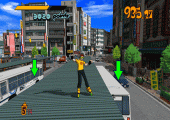
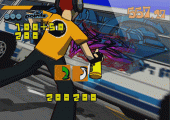
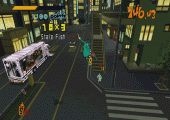
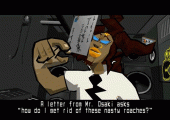
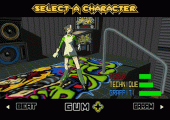
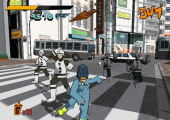
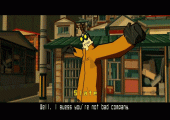
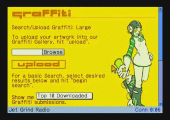
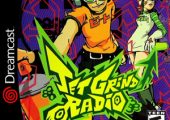
Recent Comments